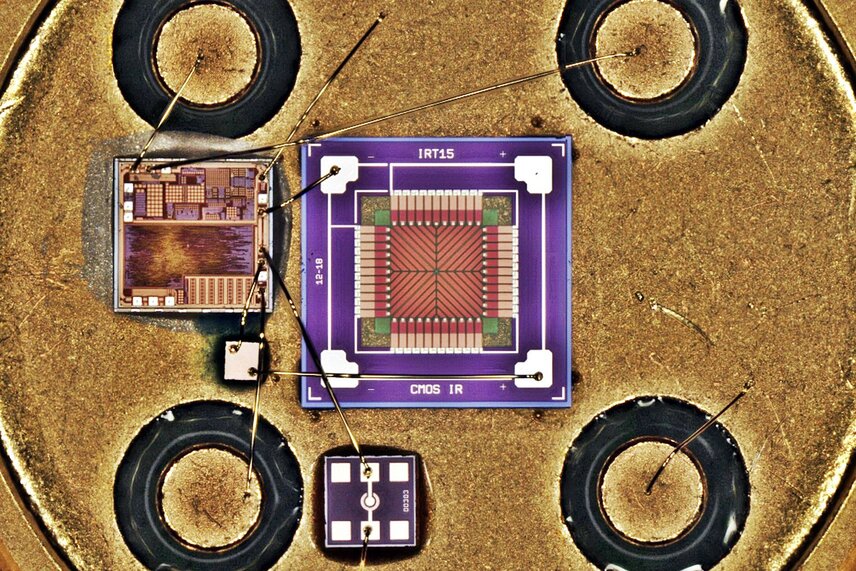
Infrared light is a carrier of numerous pieces of information: On the one hand, the thermal emission from surfaces can be used for non-contact temperature measurement. On the other hand, the composition and concentration measurement of various substances and mixtures can be carried out through the material-specific spectral light absorption. The way from large laboratory devices to compact sensors requires miniaturized and specialized assemblies, for which the technologies of silicon microsensors are suitable.
In this context, the CiS Research Institute has focused on the development and production of IR emitters and thermopile sensors. Both solutions have in common that the actual active zone is spanned within a very thin membrane. The silicon carrier is completely removed towards the end of the manufacturing processes in these areas, leaving only a narrow frame of it for handling and assembly. This structure offers the advantage that the active regions have very low (thermal) mass and are well thermally isolated from the rest of the system. The resulting assemblies are not only very small with edge lengths in the range of 1 to 3 mm, but also exhibit fast response times.
The realized MEMS IR emitters are based on the broadband thermal emission of a typically 600 to 800°C hot ohmic heating element. Spectral response and dynamics can be controlled in an application-specific manner by the layer structure and geometry. In the case of non-dispersive IR (NDIR) sensing, this light shines through the volume under investigation.
An IR sensor, often subdivided into several spectral channels, is placed on the opposite side, and its signals can be used to determine the concentration of the substances sought. Thermopiles with optical filters are often used for this purpose, in which the temperature difference between the illuminated membrane and the colder sensor frame leads to measurable thermoelectric voltages. This technology is used in particular for gas sensors, where various species such as nitrogen oxides, methane, CO2 or alcohols can be detected and measured. Thermopiles are also used for contactless (body) temperature measurement and are often the core component in commercial clinical thermometers and pyrometers.
The CiS Research Institute focuses on the development and production of silicon components and innovative solutions for their assembly and housing. The subsequent development of gas sensors and temperature measuring devices is carried out by industrial partners.
Contact: Dr. Martin Schädel, mschaedel@cismst.de
With 20 years of dedication to gas sensing technologies, Cubic, an international manufacturer, has developed diverse mature sensing platforms. Using …
The SensorNetwork³ Symposium brought together experts from industry, research and politics at the DASA in Dortmund in mid-January to discuss …
The rapid developments in energy and mobility sectors are driving the need for new solutions. The energy transition and the …